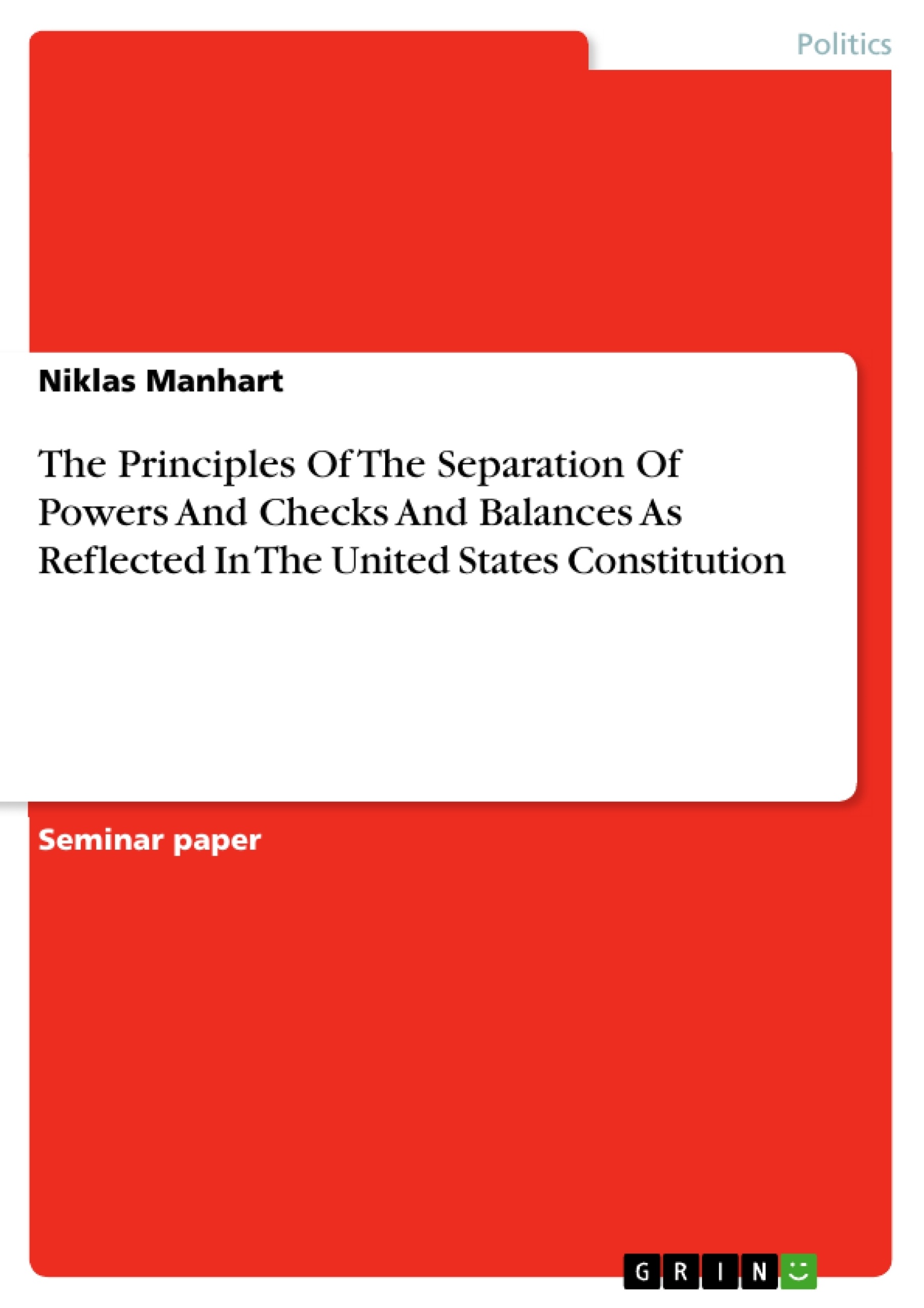The political system of the United States is characterised by separation of powers with an elaborate system of checks and balances among the three constitutional branches: Congress the presidency and the court. In this essay I trace back this system back to the historical intention of its framers, assess the current distribution of powers and discuss problematic developments.
Table of Contents
- Introduction: Paulson's quarrel with Congress
- Checks and balances in the Constitution of the United States
- Historical intentions of the framers
- The checks and balances in detail
- Overview
- Checks by Congress
- Checks by the president
- Checks by the courts
- Conclusion: Constitutional gridlock?
Objectives and Key Themes
This text explores the principles of the separation of powers and checks and balances as reflected in the United States Constitution, using the example of the 2008 financial crisis to demonstrate the practical application of these principles. It aims to trace back the historical intentions of the framers, assess the current distribution of powers, and discuss problematic developments.
- The historical development of the separation of powers principle in the US Constitution
- The specific checks and balances embedded in the US Constitution across the legislative, executive, and judicial branches
- The impact of divided and unified government on the relationship between the executive and legislative branches
- The evolution of the interpretation of the separation of powers principle over time
- The potential for constitutional gridlock and its implications for governance
Chapter Summaries
The text begins by examining the contrasting legislative processes of the US and Germany in response to the 2008 financial crisis. The author highlights the slow, arduous process of passing the “Emergency Economic Stabilization Act of 2008” in the US, contrasting it with the swift approval of a rescue package in Germany. This difference is attributed to the US's system of separation of powers and checks and balances.
The text then delves into the historical intentions of the framers of the Constitution, drawing on the writings of Montesquieu and Madison to explain the rationale behind separating powers and establishing checks and balances. The author argues that the framers sought to prevent the concentration of power in any single branch of government, thus mitigating the risk of tyranny and ensuring a balance of competing interests.
The third section examines the specific checks and balances implemented within the US Constitution. It outlines the various powers each branch holds to check the actions of the others, including the legislative branch's right to refuse to pass presidential proposals and the judiciary's power of judicial review. The author emphasizes the importance of political context in understanding how these checks are exercised, particularly the dynamic between divided and unified government.
Keywords
The text focuses on key concepts such as the separation of powers, checks and balances, the US Constitution, the legislative, executive, and judicial branches, divided government, unified government, the 2008 financial crisis, and the “Emergency Economic Stabilization Act of 2008”. It also draws on the historical context of the US Constitution, referencing the Articles of Confederation and the writings of figures such as Montesquieu and Madison.
- Quote paper
- Niklas Manhart (Author), 2008, The Principles Of The Separation Of Powers And Checks And Balances As Reflected In The United States Constitution, Munich, GRIN Verlag, https://www.grin.com/document/189005



